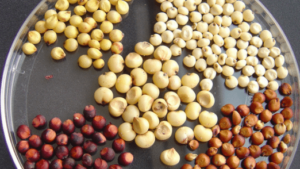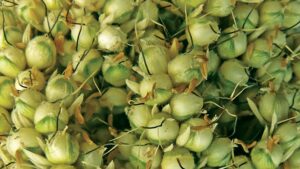The earliest evidence of wild sorghum comes from short-lived hunter and gatherer camps in the Sahara dating to roughly 7,500 BCE. Traces of the earliest evidence of domesticated sorghum were found in fourth millennium BCE pottery fragments from the southern Atbai region in eastern Sudan where sorghum was used as temper or an additive to clay.
Dorian Fuller, archaeobotany professor at the Institute of Archaeology, University College London, found the pottery at a site called KG23. The site is associated with several Neolithic cultures in Sudan. Covering roughly 30 acres, the site was occupied from about 3,500 BCE to 2,500 BCE based on radiocarbon dating.
The ancient environment around KG23 was wetter than it is today, with a small seasonal river nearby and alluvial soils suitable for crop cultivation. Evidence uncovered in KG23’s rubbish dumps indicates it was inhabited year around.
Evidence of the earliest known domesticated sorghum dates to 2,000 – 1,700 BCE and was found in India. Domesticated sorghum did not appear again in Sudan until the later part of the first millennium BCE. Fuller says the domestication process for grains often took around two to three thousand years













